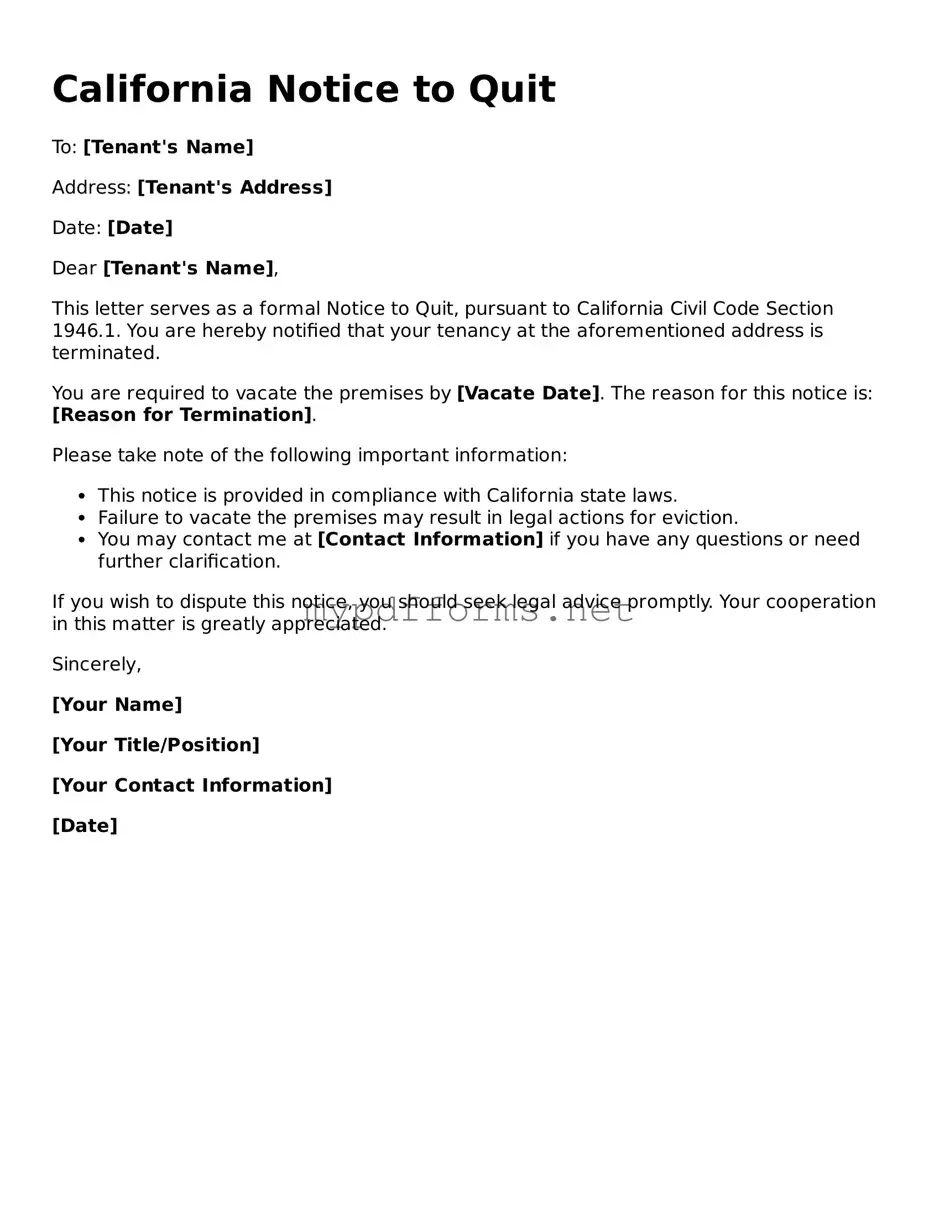The California Notice to Quit form serves as a crucial document in the eviction process, but it shares similarities with several other legal documents. One such document is the Eviction Notice. Like the Notice to Quit, an Eviction Notice informs tenants of their lease violations and the need to vacate the property. Both documents outline the reasons for the eviction, whether it be non-payment of rent or lease violations, and provide a timeline for the tenant to respond or vacate. The tone is formal, and both documents aim to protect the landlord's rights while ensuring tenants are aware of their obligations.
Another document similar to the Notice to Quit is the Pay Rent or Quit Notice. This notice specifically addresses situations where tenants have failed to pay rent. It notifies tenants of the overdue rent and demands payment by a certain date. If the tenant does not comply, they must vacate the premises. Both documents emphasize the importance of timely rent payments and serve as formal warnings before further legal action is taken.
When dealing with legal matters such as the drafting of powers of attorney, it's essential to have reliable resources at your disposal. Understanding the nuances of various forms and documents can be daunting, but utilizing tools like the Illinois Forms can simplify the process. By providing templates and guidance, these resources help individuals navigate the complex landscape of legal documentation, ensuring that their intents and decisions are clearly articulated and executable.
The Three-Day Notice to Perform or Quit is also comparable to the Notice to Quit. This document is issued when a tenant has violated a term of the lease agreement, such as keeping unauthorized pets or causing damage to the property. It gives the tenant three days to remedy the violation or vacate. Like the Notice to Quit, it provides a clear timeframe for compliance, ensuring that tenants understand the urgency of the situation.
The 30-Day Notice to Terminate Tenancy is another document that bears similarities to the Notice to Quit. This notice is typically used in month-to-month rental agreements when either the landlord or tenant wishes to end the tenancy. It provides a full 30 days for the tenant to vacate the property. While the Notice to Quit focuses on specific violations, the 30-Day Notice serves as a general termination notice, allowing for a more amicable end to the landlord-tenant relationship.
The Conditional Quit Notice also aligns closely with the Notice to Quit. This document informs tenants that they must vacate the premises due to specific conditions, such as repeated lease violations. It serves as a warning that failure to comply may lead to eviction. Both documents highlight the necessity for tenants to adhere to their lease agreements while ensuring that landlords have a formal means of addressing issues.
Lastly, the Lease Termination Letter is akin to the Notice to Quit in that it communicates the intent to end a rental agreement. This letter can be issued by either party and typically outlines the reasons for termination. While it may not always lead to eviction, it serves as a formal notification of the desire to end the tenancy. Both documents aim to clarify the expectations of both landlords and tenants, fostering transparency in the rental relationship.
